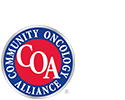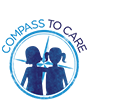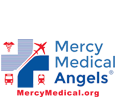What is ALS?
May is ALS Awareness Month, and Real World Health Care wants to support the ALS patient community by bringing awareness to this disease. The following “primer” provides need-to-know information about Amyotrophic Lateral Sclerosis (ALS), also known as Lou Gehrig’s disease.
ALS Defined
ALS is one of a group of conditions known as motor neuron diseases (MNDs) and accounts for 85 percent of MND cases.
ALS affects nerve cells in the brain and spinal cord that make muscles work in both the upper and lower parts of the body, making them stop working and eventually die. The nerves lose their ability to trigger specific muscles—such as those used for chewing, walking and talking—which causes the muscles to become weak, start to twitch and waste away. It is a progressive disease, with symptoms worsening over time, and eventually leads to paralysis and the inability to breathe.
A number of inherited factors have been found to cause familial ALS, although the cause of most other cases of ALS is unknown. Scientists are studying potential factors including heredity, environmental exposures, diet and injury.
ALS Symptoms and Diagnosis
The onset of ALS can be subtle, with the following symptoms gradually developing over time:
- Muscle twitches in the arm, leg, shoulder or tongue
- Muscle cramps
- Tight and stiff muscles
- Muscle weakness affecting an arm, leg, neck or diaphragm
- Slurred and nasal speech
- Difficulty chewing or swallowing
Eventually, people with ALS will not be able to stand or walk, get in or out of bed on their own, or use their hands and arms. They will have difficulty breathing as the muscles of the respiratory system weaken and will eventually need a ventilator to breathe.
ALS is primarily diagnosed based on detailed history of the symptoms and signs observed by a physician during physical examination, along with a series of tests to rule out other mimicking diseases. No one test can provide a definitive diagnosis, and it typically takes about a year before a final ALS diagnosis is made.
How Many People Have ALS?
Estimates suggest that anywhere from 15,000 to up to 30,000 people in the U.S. have ALS, with about 5,000 new cases diagnosed each year. The disease is more common in men than women, and most people are diagnosed between the ages of 55 and 75. About 5-10 percent of cases occur within families. In those families, there is a 50 percent chance each offspring will inherit the gene mutation and may develop the disease. Military veterans are about twice as likely to develop ALS as other population groups.
Most people with ALS live an average of two to five years after symptoms develop. People who are younger when the illness starts live slightly longer. About 10 percent survive 10 or more years. People with familial ALS usually do not fare as well as people with ALS who are not related, living only one or two years after symptoms appear.
There is no cure for ALS and no effective treatment to halt or reverse the progression of the disease. However, there are treatments that can help control symptoms, prevent unnecessary complications and make living with the disease easier. Supportive care includes drug treatments, therapy and special equipment to keep people as mobile, comfortable and independent as possible.
Creating a Better Future for People with ALS
The CDC has established the National ALS Registry to help researchers find answers to important questions about the disease. The Registry collects and analyzes patient data to help researchers look for disease pattern changes over time and identify whether there are common risk factors among individuals with ALS. By joining the Registry and taking the risk factor surveys, people with ALS will help provide a better picture of who gets ALS and risk factors for the disease. Join the Registry.
The National Institutes of Health (NIH) has a list of federally and privately sponsored ALS clinical trials. To find clinical trials on ALS, visit www.clinicaltrials.gov and enter the terms “amyotrophic lateral sclerosis” or “ALS” AND (your state). NIH also supports a NeuroBioBank that supplies scientific investigators with tissue from people with neurological and other disorders. Tissue from people with ALS is needed to enable scientists to study the disorder more intensely. Prospective donors can learn more at https://neurobiobank.nih.gov/donors-how-become-donor/.
The ALS Association has support groups for people living with ALS and their families and loved ones. Support groups offer a forum to share information and practical experience, a safe place to show emotions, and a gathering spot for speakers and caregivers to address topics of interest. Find a support group in your state. The ALS Association also has resources for caregivers.
There can be significant costs for medical care, equipment and home health care during later stages of the disease. People with ALS should become knowledgeable about their health plan coverage and other programs for which they may be eligible including Social Security Disability Insurance, Medicare, Medicaid and Veterans Affairs benefits.
Real World Health Care blog sponsor, the HealthWell Foundation, provides financial assistance to people living with ALS. Through the fund, HealthWell will provide up to $15,000 in copayment or premium assistance to eligible patients who have annual household incomes up to 500 percent of the federal poverty level. To learn more, visit HealthWell’s Amyotrophic Lateral Sclerosis Fund page.
Resources
Centers for Disease Control and Prevention
National Institutes of Health: National Institute of Neurological Disorders and Stroke

















